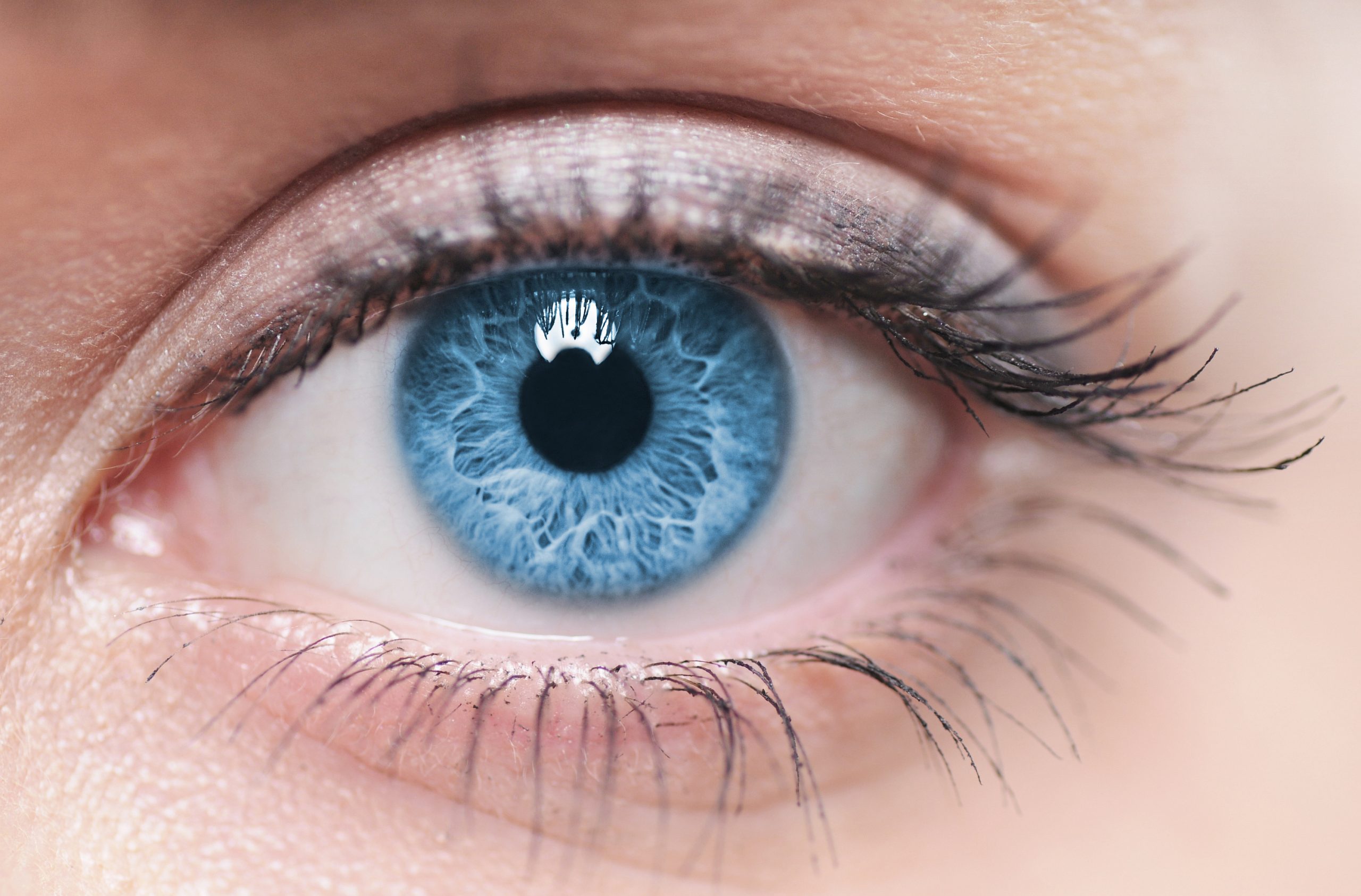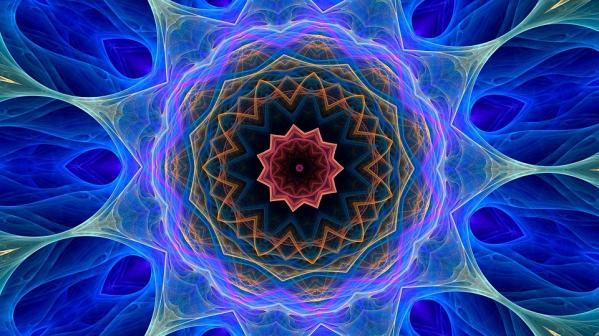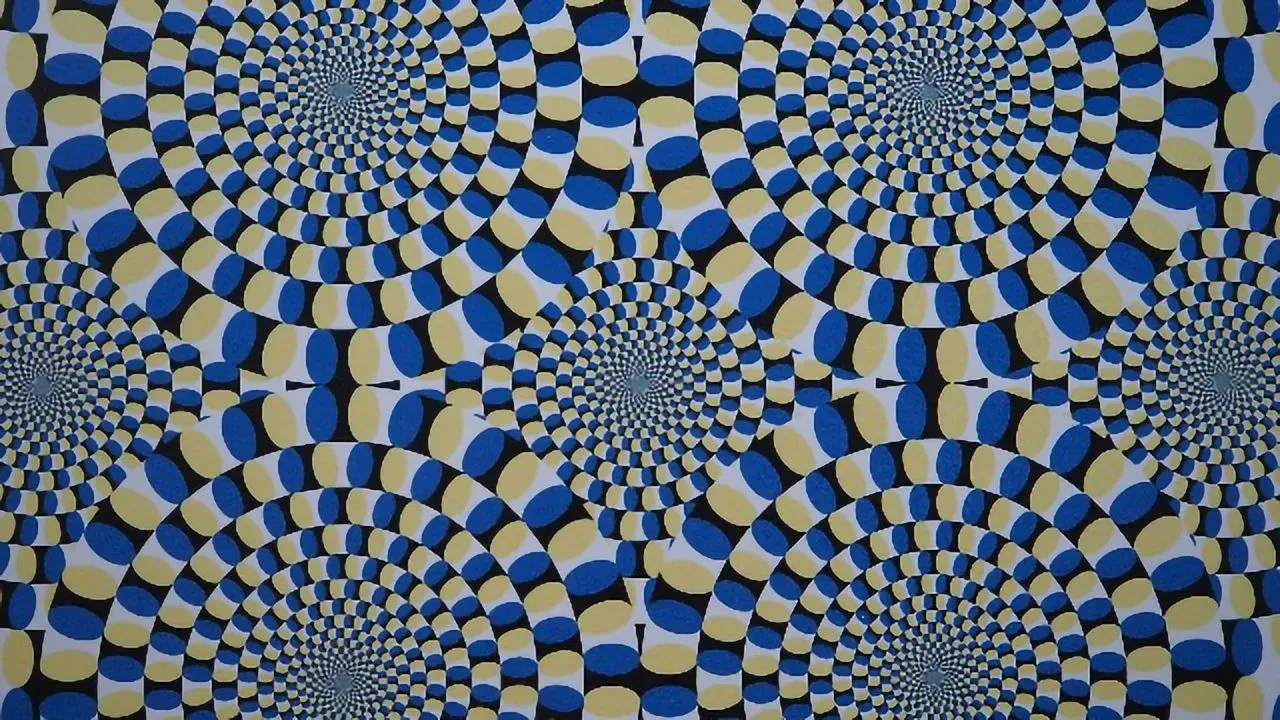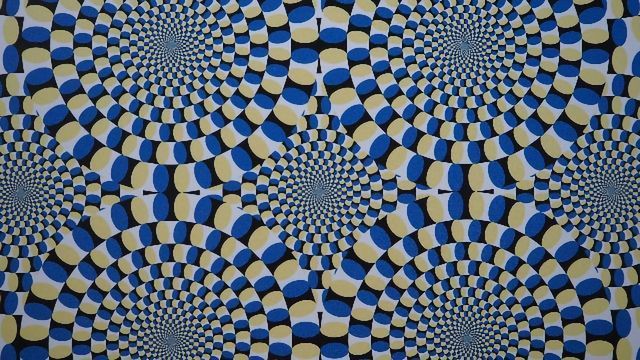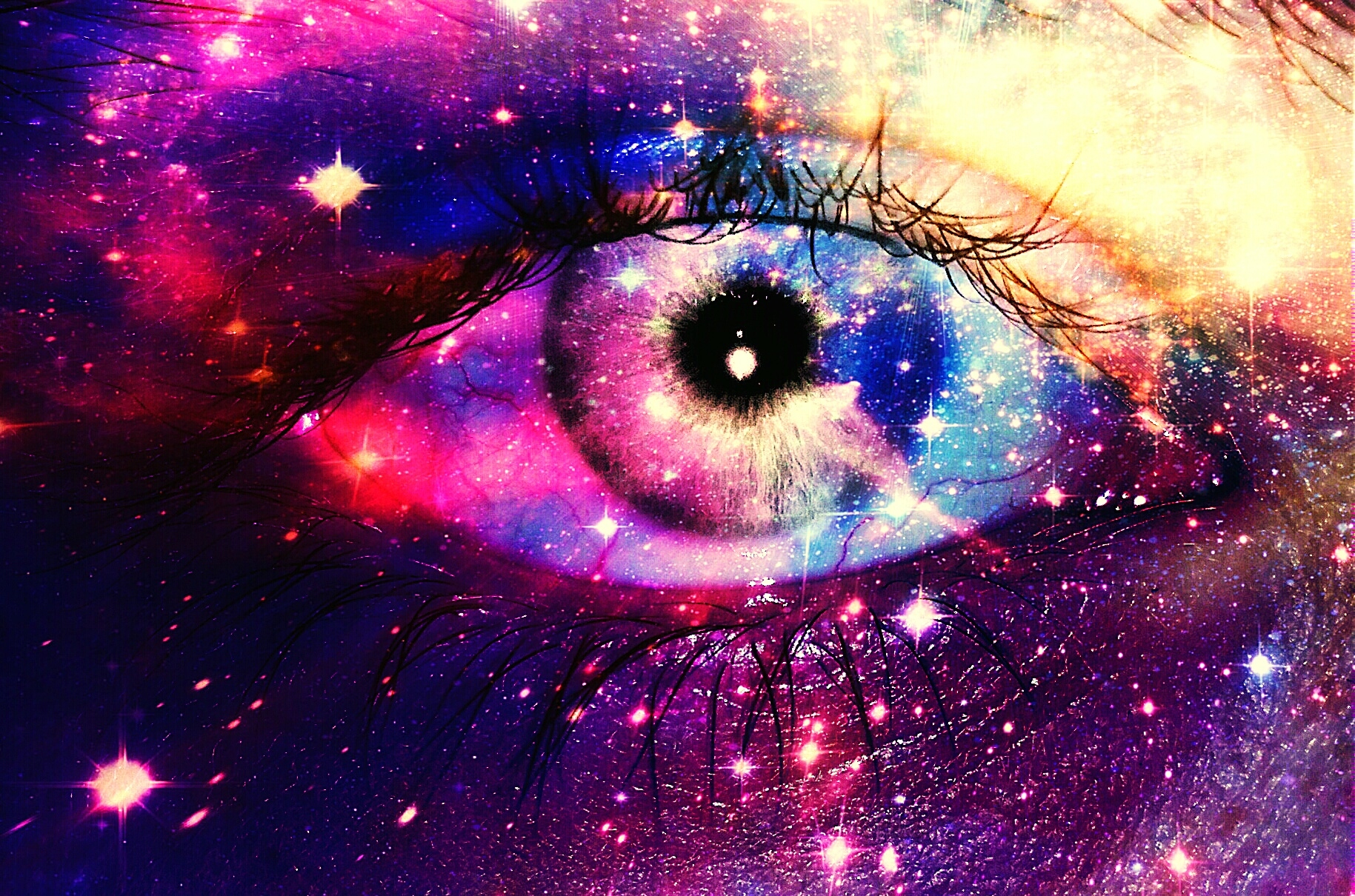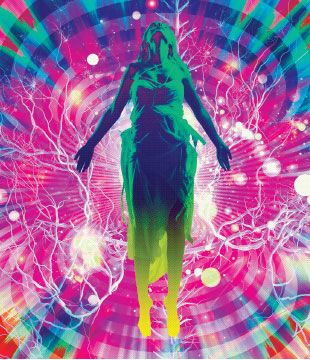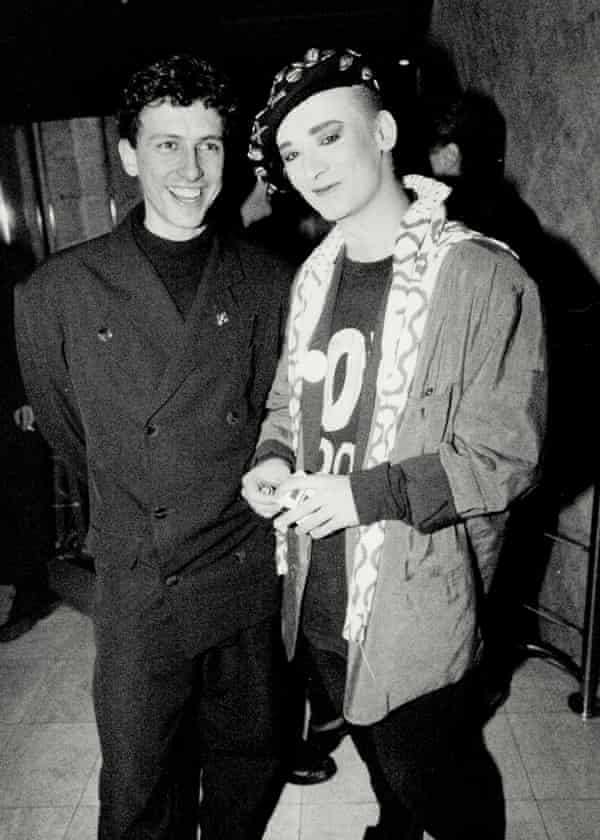These are the people who toil away in obscurity for years doing the hard lab work with little to no recognition for their efforts. It is my opinion that “science” gets way too much credit while real scientists (not celebrities in lab coats) should be the ones getting the credit and publicity of groundbreaking research. I believe that
the recent DMT study published in Scientific Reports is by far the most important study in 2019 and all the scientists involved in the study should deserve wide name recognition and credit for their efforts. Credit needs to go to the following: lead author and fast-rising DMT researcher Jon Dean, Dr. Jimo Borjigin, Dr. Steven Barker, Dr. Rick Strassman, Dr. Michael M. Wang, Dr. Tiecheng Liu, Dr. Sean Huff, and Dr. Ben Sheler.
It’s difficult to recall the last time that I had a great meal and made the generic claim of “I love food”. Generally speaking, it’s either the restaurant that receives compliments, the type of meal that receives praise, or homage is paid to the chef directly. This is why it’s so amusing and yet perplexing when people seem to generically pronounce their “love for science” when an interesting study is published. Similarly to the cooks of a great meal… it is humans, people, scientists that actually carry out the experiments.
I recently had a chance to have a conversation with a woman who is leading the scientific pathway to researching the mysterious compound DMT… Dr. Jimo Borjigin from the University of Michigan. Dr. Borjigin received her PhD from John’s Hopkins University and has published ground-breaking research regarding
increased brain oscillatory speeds & coherence following cardiac arrest,
the neurochemical fluctuations following asphyxia-based cardiac arrest,
the discovery of DMT production in the pineal gland of live rats, and now the
most recent study that has observed comparable levels of DMT to common neurotransmitters (dopamine, serotonin, and norepinephrine) in the brain. If Dr. Rick Strassman can be considered the “King” of DMT research based on his studies from the early 1990’s and
wildly popular book “DMT: The Spirit Molecule”… Dr. Borjigin can be considered the “Queen” based on her extremely important work in the field since 2012.
JC: So… while many people have heard the backstory of how Dr. Rick Strassman got involved in DMT research due to his book “The Spirit Molecule”, not many know about how you got your start in this field. Would you mind giving us a little bit of background as to how all of this came about?
Jimo: I had been working on the pineal gland and studying how dynamic secretion of melatonin from the pineal gland teaches us about how circadian clock works in the mid-2000. I was also teaching our graduate students about the pineal gland. One day in 2011, when I googled the word “pineal gland” (hoping to find some cool pictures to include for my class teaching), I came across Rick Strassman’s book (DMT: The Spirit Molecule) and the documentary about the book. I was very surprised when I heard Rick saying that DMT was made and secreted in the pineal gland, since I knew nothing about it. I emailed Rick directly and asked him for the evidence that his statement was based on, and was told that it was just his speculation. I told Rick that I was interested in testing his theory, as we were routinely performing pineal microdialysis experiments and I believed that if DMT is ever secreted from the pineal gland, we should have them in the dialysates. Rick was nice and encouraging; he introduced me to Steve Barker who routinely analyzing controlled substances in his lab, and the rest was history.
JC: Good stuff… so let’s just dive right into it…you did a really big study recently. I’m obviously biased but this is probably the most important study of the year for sure. Your research team found the circulating levels of DMT at similar levels to very commonly studied neurotransmitters serotonin, dopamine, norepinephrine. Being that you stated that this was found in the extracellular fluid am I correct in assuming that this is the cerebrospinal fluid? If so, where do you hypothesize that the DMT is synthesized in terms of the measurements you took at the cerebral cortex?
Jimo: Oh wow (laughing). Thank you I’m very flattered. Well, it’s within tissue in the extracellular space… we didn’t really stick a probe only into the brain ventricles where the cerebrospinal fluid is in abundance. We stuck our probe into the brain tissue where neurons are packed. So it is definitely extracellular. So, these are not the quantities within individual cells… I’m assuming that DMT is a neurotransmitter and it might be actually packed and stored inside the vesicles within neurons. The release is only activity-dependent if DMT is truly a neurotransmitter. The basal levels of the 3 monoamine neurotransmitters (serotonin, dopamine, norepinephrine), which the DMT concentrations were compared with, were also assayed the same way. This means that they inserted a microdialysis probe into the brain to measure the basal level of those 3 neurotransmitters, which is why we think DMT is comparable.
JC: Where do you hypothesize that the DMT was synthesized when taking measurements at the cerebral cortex? Any specific cells?
Jimo: We believe that DMT is made in the neurons. The reason for that is the following… we showed that one of the DMT synthetic enzymes AADC which is also called DDC… the same protein with 2 different names. This is the first of the two DMT enzymes that converts tryptophan into tryptamine. It is essential for all other monoamine neurotransmitter synthesis, but it is also required for DMT synthesis. For a long time people knew that there are neurons in the cerebral cortex (really all over the brain) that contain AADC. However, none of the other 2 enzymes (tyrosine hydroxylase or tryptophan hydroxylase) that are essential for the synthesis of canonical monoamine neurotransmitters such as serotonin, dopamine, norepinephrine were found. It is tryptophan hydroxylase (-TPH2 in the brain) that is required for the synthesis of serotonin together with AADC; tyrosine hydroxylase (TH) together with AADC required for the synthesis of dopamine (and norepinephrine). So when people look for monoamine neurons that synthesize serotonin, dopamine, norepinephrine, … they always have to look for both enzymes (AADC + TH/TPH2). So in these scattered cortical neurons that contain AADC (called D-neurons), people couldn’t find either one of those enzymes (TH/TPH2). So clearly there is a lot of work to do for us to really have a thorough understanding of the details of the localization of potentially DMT produced in neurons in the brain. The reason we think these are neurons is because D-neurons were confirmed to be neurons in both human brains and animal brains in the cortex by others. But we still need to use a neuron-specific biomarker to measure the colocalization of a neuronal marker in the INMT- positive cells to thoroughly demonstrate that these neurons are the source of DMT or have the capacity to produce DMT.
JC: Prior to this study much of the discussion surrounding endogenous DMT from researchers in the field was based on stating that the lungs were the primary source of DMT.
Jimo: Right, right.
JC: From what I understand this was based on the levels of INMT found in the lungs… right?
Jimo: Correct! Yeah it’s amazing (laughing).
JC: But this recent study found not only INMT but AADC co-localized which we basically just covered. But in essence… the same people that were saying that DMT is not produced in the brain or not produced in the pineal gland…based on the INMT-DMT lung hypothesis it would seem that they would be forced to concede that DMT is produced in the brain now?
Jimo: Yeah (laughing)… I would think that any reasonable person would say that. It’s amazing to me that a lot of people were saying that DMT is made in the lungs. In the case of DMT production, it’s been known for a long time that it requires 2 enzymes and ideally, the 2 enzymes would be situated in the same cells in order for that cell to produce DMT. And yet… people are simply just looking at INMT expression and assuming that that alone is sufficient to produce DMT (without AADC).
JC: Some people think that this study puts the pineal gland theory to rest. I feel like that’s not entirely correct.
Jimo: I think you’re right.
JC: This is the first study that actually shows that the human pineal gland has INMT/AADC in order to make DMT.
Jimo: Yes.
JC: While the extracellular levels of DMT in the cerebral cortex were similar between normal and pinealactomized rats, is it possible that the pineal produced DMT has a greater effect in the third ventricle or thalamus region in comparison to the cerebral cortex levels?
Jimo: Well… all I can say is that the neocortex can produce DMT in the absence of a pineal gland. Our study did not really address the issue of pineal DMT production. The fact is that in our data in the absence of the pineal gland the DMT levels go up (not significantly, though). Our data is relatively crude based on the fact that we surgically removed the pineal gland. When you yank the pineal gland out you disturb the blood-brain barrier a bit since the pineal gland is part of the blood-brain barrier preventing things from going in and out. So we don’t know why it goes up in the absence of the pineal gland. I haven’t given it too much thought but all we’re showing is that the brain doesn’t really require the pineal gland to produce DMT. The pineal may produce a small level of DMT but it’s clearly not contributing a huge amount. If the pineal gland produced 3X as much then we should have seen a difference. I strongly believe that the cortex (where we utilized our microdialysis probe) makes and secretes DMT independent of the pineal gland. The pineal gland is not essential and is not required… it doesn’t mean the pineal gland itself cannot make DMT since all the machinery is there. But we had a long paragraph in the discussion part of the paper discussing why we think the pineal gland may not contribute much to DMT production. If you look at the affinity of the AADC enzyme, it actually prefers to convert 5-hydroxtryptophan (5-HTP) into 5-hydroxytryptamine (5-HT). For serotonin production tryptophan is first converted to 5-hydroxtryptophan by TPH and the second step for serotonin synthesis is converting 5-hydroxytrytophan (5-HTP) to 5-hydroxytryptamine (5-HT); so apparently, AADC has a higher affinity for 5-HTP than tryptophan. So if both 5-HTP and tryptophan are around (in this case in the pineal gland) AADC would prefer to catalyze the reaction of 5-HTP to 5-HT… so it kind of ignores tryptophan. However, in other cells if AADC is only looking at tryptophan and if 5-HTP is not around, it should readily convert tryptophan to tryptamine.
JC: Are there any neurotransmitters or any endogenous biochemical(s) for that matter that have been identified to be rat specific in comparison to that of humans as far as we know? What I mean by this is whether there is any data to suggest that rats produce different biochemicals than humans in the brain or throughout the body?
Jimo: Usually when you go up the evolutionary tree, it is higher-order animals such as humans that have something that the rats don’t have and it doesn’t go the other way around. Especially being that both rats and humans are both mammals, so it’s highly unlikely. On the other hand, if you go down to invertebrates or lower vertebrates who have very unique habitats they may have stuff that humans don’t need. So my answer is NO, not as far as I know. There are genes and proteins only found in humans, but not in mice or rats. I am not aware of any genes or proteins present only in rats but not in humans.
JC: So that would mean that for someone to claim that DMT is not found in the human brain because the research only took place in live rats (although you took in vitro sampling of human brains that observed the same exact enzymes that rats produced in order to synthesize DMT) that they would be making claims that fall outside the scope of scientific data to date?
Jimo: Unless I’m mistaken Dr. Steven Barker has already measured DMT in the brains of deceased individuals and trace amounts in their blood. This could be a question for Steven regarding the solid evidence of showing DMT is found and collected from humans. All reasonable people would agree that if human brains are found to express both INMT and AADC, it is highly likely that DMT will be made in the human brain. The next step would be to stick a probe in a live human’s brain so we could monitor DMT at a level comparable to other neurotransmitters but usually, that level of proof is rarely demanded for research because it is so unusual to be able to get samples using such invasive techniques. No one would want to volunteer for that kind of experiment being that it comes with some kind of risk. So I don’t believe it is necessary. Having experimental proof from humans would certainly help, but it is not always feasible to do so.
JC: I think all the hard-nosed “skeptics” continuing to question whether humans brains produce DMT following this recent study should volunteer for the brain-probe study…
Jimo: (laughing) But remember we don’t want to really make any enemies. My take is that unless you have evidence against the human brain-DMT hypothesis there isn’t much to say. We are doing our best effort.
JC: Going back to the yanking out of the pineal gland… Being that DMT has been observed to have anti-inflammatory properties, is it possible that yanking out the pineal gland causes cerebral inflammation-inducing a periphery response to synthesize more DMT to alleviate this then causing the levels to go up?
Jimo: That is highly unlikely as in the periphery, there are very few cells that contain both AADC and INMT in contrast to the brain. Plus, if there were any inflammation, it should be within the brain near where the pineal gland was in touch with, which is not known to exert peripheral inflammatory responses. We performed numerous pineal removal surgeries over the years, have never observed any signs of notable inflammatory responses in rats.
(JC Note: I didn’t clarify when I stated “periphery.” I meant the periphery area of the brain in near proximity to the pineal gland wound not peripheral nervous system outside of the brain. It was my fault for not clarifying.)
JC: Ok. I find it super interesting that much of the same team that did this study also did the 2013 cardiac arrest study which observed the global and coherent surge in gamma waves in the brain. Based on the literature out there it seems as though exogenous DMT and Ayahuasca also induce increases in gamma waves. Do you believe that there is a possibility of a tight correlation between the upregulation of endogenous DMT and gamma activity?
Jimo: Well… in this recent paper we didn’t even have cardiac arrest in the title so it wasn’t our focus. The main message from this recent paper is that DMT can be produced and released from the neurons in the brain at the level that is comparable to other monoamine neurotransmitters. My students are super excited about
our 2013 cardiac arrest paper and the link between the DMT and near- death experiences. The two areas of studies (near-death consciousness and DMT) emerged coincidentally at the same time in our lab as 2 independent branches of research which appear to have the potential to converge into a related research theme. Clearly Rick Strassman talked about this hypothesis and the idea has been floating around out there for many years and it sounds reasonable. In the recent paper, we wanted to know whether there was anything that could upregulate or downregulate DMT release. So when we induced experimental cardiac arrest in animals, their DMT levels went up in some but not all animals, which is interesting. The recent study was not done to demonstrate DMT levels in cardiac arrest but it was more based on showing that there are physiological events that can increase DMT. Some kind of physiological event can regulate DMT release. Regulated release of chemicals is required steps for something to be called a neurotransmitter. We are trying to push this work toward demonstrating DMT as a neurotransmitter. Some interpret our data as DMT being linked to NDE’s which is not my intention or the goal of the study; but clearly a lot of people are interested in the study because of that potential link. However, for DMT-NDE to be linked, we would have to do the
same exact study we did in our 2015 PNAS paper where we monitored neurotransmitter release at 60 second intervals and measured the amounts of neurotransmitters released… and it was a huge amount. Within 2 minutes of asphyxic cardiac arrest, dopamine went up, norepinephrine went up, serotonin went up, GABA went up… not all neurotransmitters went up so high though. Glutamate only went up 2-fold… so it’s a massive release of various neurotransmitters, a tightly regulated process that happens super- fast. So we would have to monitor the release of DMT at a finer resolution in order to really say anything about whether DMT is potentially involved. That study still remains to be done.
JC: I guess what I’m asking you is to maybe hypothesize about… in the 2013 study you saw a huge surge in global gamma waves. Basically faster brain activity…
Jimo: Yes.
JC: In the 2015 study you basically saw a “brainstorm” in which a bunch of neurotransmitters were upregulated.
Jimo: Yes.
JC: Do you think it’s that far-fetched to think that DMT might be a part of that biochemical mix and that it could contribute to the gamma wave correlation or is that still too speculative?
Jimo: It’s possible. I guess until we do the experiment we’re not sure, we don’t know. There’s a possibility that those 2 are linked.
JC: In terms of a definitive way to know whether DMT is tightly correlated with gamma waves… is that something that you could figure out with an INMT-KO animal?
Jimo: Yeah… I think if a gamma surge disappeared then that might be a way to support the hypothesis.
JC: That makes sense… but it wouldn’t even really have to disappear necessarily right? It could just be affected.
Jimo: Correct… yes.
JC: Switching gears… One of the biggest issues I’ve seen is that people are so excited about psychedelic research and there seems to be a decent amount of funding for the field but I think that the endogenous research is even more interesting.
Jimo: I think so too (laughing). I agree with you there.
JC: Much of the psychedelic research these days focuses on fMRI studies so it seems like cerebral blood flow seems to be the predominant measure of perceived activity. However, in a yet to be published interview I did with Dr. Mauro Zappaterra he stated that based on his research, cerebrospinal fluid can act as a signaling medium being that it can carry the neurotransmitters and signaling throughout the brain on a global level. This would seem to add another layer of complexity in terms of analyzing brain activity when comparing fMRI to EEG. What are your thoughts regarding this?
Jimo: FMRI monitors changes associated with blood flow. Robin Carhart- Harris has done psychedelic work with fMRI and the subjects actually show the lowering of fMRI measures. It’s a different mode of regulation so we don’t really know… I wish when Rick Strassman did his study he had everybody monitored for EEG or fMRI to see what happened to them. My guess is that study is coming and somebody is working on that. We can easily do an EEG study on animals but we just cannot ask them what they experience. Sooner or later it will have to be done.
JC: It’s interesting that fMRI shows a decrease in whatever might be termed as brain activity but in EEG studies it shows that there’s an increase in faster oscillations and a decrease in slower ones.
Jimo: Right.
JC: A lot of stuff to uncover there…
Jimo: Correct.
JC: While the recent study focused on DMT and the enzymes INMT and AADC… what are your thoughts on researching endogenous monoamine oxidase inhibitors (MAOI) such as
tribulin,
tryptoline,
neurocatin or
pinoline and their relationship with endogenous DMT?
Jimo: Yeah, there is a lot to do and the future research is just wide- open for these questions to be addressed. Our study simply points out that there is a whole new world out there for people who are interested in the molecular basis of altered states of consciousness and a potential new direction for looking into psychiatric disorders. So I think there are lots of interesting things that can happen but right now we have to focus on something that the National Institutes of Health (NIH) could consider funding. We have to convince them that this is something that may be medically relevant and that we’re not just thinking about euphoric states and psychedelic states… something that can benefit patients.
JC: Yeah… would you consider private funding?
Jimo: Oh yeah totally.
JC: We’ll go off the record with that discussion…
Jimo: (laughing)
JC: Do you have any interest in replicating this recent study but also measuring levels of 5-MEO-DMT and Bufotenine?
Jimo: Oh yeah. Once again this is another area that is wide open that one can do. It all depends… once again… on funding. Right now people are lined up to want to work in my lab. Every year, lots of graduate students contact me for a position my lab; and the first thing I tell them is: I am sorry that I can’t take you in my lab because I don’t have NIH funding for DMT research.
JC: (Cutting in) Horrible
Jimo: (laughing) That’s the standard answer for several years now. I just recently accepted a very good student who insisted on joining my group regardless of the lack of NIH funding. In any case, we try to collaborate with people that have grants to make it happen; but the key is to have research funding to support the DMT endeavor.
JC: Absolutely. That’s one of the most frustrating things I see in terms of scientific research. There’s so much money that goes into genetic research and things of that nature but there’s so little funding that goes into endogenous DMT research by comparison.
Jimo: There are various ways that this line of research can now be supported because we’ve shown that DMT is really in the brain and may serve some kind of functions; we just need funding support to do more studies. That’s why I’m happy to discuss this research with the media, so we can raise more awareness and hopefully garner funding for our DMT research. Scientists tend to stay in their labs and do their own research and it takes years to get their data out there to be in the public and to gain support from the public. I think that the publicity this paper has created (which surprised me) may generate a lot of interest.
JC: Yeah… I think the public is starving for it. I know I am (laughing). You’re one of the only labs doing endogenous DMT research and everybody is speculating on it but people want definitive answers. I definitely see the money coming in but certain people need to get in motion to make this happen. I keep on asking you about speculative studies so I apologize but one of the co-authors of the recent paper was
Steven Barker and in an interview he discussed an unpublished study in which rats administered LSD showed a 1000% increase in 5-MEO-DMT and a 400% increase in DMT. Do you have any interest in possibly attempting to replicate that study?
Jimo: (laughing) I think it would be faster to just wait for the paper to be published right? I don’t know who the author of the paper is though.
JC: It was a study in which the author of the paper passed away so that’s why Dr. Barker said it didn’t end up getting published.
Jimo: Oh. I see.
JC: I think it would be a really interesting replication study in the sense of Barker’s speculations that we have an endogenous hallucinatory system and that a lot of hallucinogens might just be activating that system rather than simply acting on their own.
Jimo: That’s interesting… hmmm. Yeah… well… I’m not sure. There are so many things to do. We have to choose wisely… I have to pick my fights wisely (laughing). I guess it depends on whether the funder is really interested in pushing that line of research and if it’s somehow in-line with my own interest. I am interested in things like demonstrating that DMT is a neurotransmitter which is something that requires some work, and establishing the whole system of DMT centric neurotransmission. Beyond that… as far as looking at the homologues and endogenous system… like you said monoamine oxidase inhibitors and the recent study you mentioned regarding Barker & LSD, there are a lot of interesting things to do (laughing). It would require more dedicated, highly motivated students and people working hard to making it happen.
JC: I know that this falls outside of the realm of your research but Dr. Michael Persinger developed a device called “the god helmet” in which people would experience mystical experiences due to ultra weak magnetic stimulation. From his
EEG research he observed that these magnetic fields induced an increase in gamma waves in the brain.
He even hypothesized that DMT could play a role in this… what are your thoughts on external magnetic field influence on secretion of different biochemicals such as DMT in the brain coinciding with the mystical experience?
Jimo: Gamma waves need to be mediated by neurotransmitter secretion that is acting on the post-synaptic neurons. So there has to be a neurochemical reaction that translates into electrical signaling. So I wouldn’t be surprised at all if DMT could be one of the many neurochemicals (not the only one), contributing to the experience although it could be a key chemical. The only real way to test how much DMT plays a role in the experience is to have a DMT deficient human (or group of them) undergo the “God Helmet” and have them report the types of experiences they have and compare them to people secreting DMT normally. So basically I would say that it is not impossible, unless data shows otherwise.
JC: Do you know if there are any methods to induce respiratory fluctuations in animals without inducing anesthesia? The reason why I ask is because breathing techniques such as the
Wim Hof Method (WHM),
Stan Grof’s Holotropic Breathwork,
Joe Dispenza’s meditation, and the more ancient yogic renditions (Pranayama) have all been cited to induce visionary states when carried out for prolonged periods of time. There’s much speculation regarding DMT’s involvement and based on our conversation (and recent study) it wouldn’t be the least bit surprising as to the upregulation of DMT (alongside everything else) from these breathing exercises. Is it feasible to do a comparable study of breathing exercises in live animals?
Jimo: It’s something that I haven’t looked into so I don’t have an answer right now. Changes in breathing patterns can lead to excitation in the central nervous system. In an animal model I think you can create alterations to their trachea… it would be kind of a reversible time-controlled experiment in which you stimulate the nervous system of the animal to breathe harder. Experimentally it seems doable, as long as there are animal models to induce hyperventilation similar to that as humans it’s possible. I’m almost thinking it would be much faster and easier to do this study in humans but the invasive nature of measurement is an issue.
JC: I hear you Jimo. If it was up to you… what would you say are the top 5 studies that need to take place within this field that you are specifically focused on right now?
Jimo: The first one is that DMT is actually a neurotransmitter. After that, we would like to know how the DMT synthesis is controlled; and how it’s release is regulated. My prediction is that some of the regulatory mechanisms in charge of DMT release might be dysfunctional in patients with psychiatric disorders that feature hallucinations. We know that DMT has hallucinatory properties, so it’s not too far-fetched to predict the link there. The potential role of DMT in regards to Near Death consciousness remains to be experimentally tested explored with the gamma waves as you discussed in your blog. That’s something we can easily do to demonstrate that endogenous DMT can stimulate gamma waves.
JC: Ok.
Jimo: And, of course, whether DMT contributes to neural correlates of dream states is also an interesting question.
JC: I remember a few years back having correspondence with Dr. J.C. Callaway… a scientist
who postulated in 1988 that DMT and endogenous MAOI Pinoline played a role in the dream state. When I asked him whether he ever carried out the study he basically said the same thing that you’re telling me now… there was no funding for research so he moved on to another field.
Jimo: So we’re not the first one to bring up the lack of funding! (laughing)
JC: It’s amazingly horrible. In terms of the human studies… do you have any ideas on how you might go about doing endogenous human studies? Have you looked into any of the technology out there that might be able to do it less invasively?
Jimo: Well… I believe there are human patients who are helped and being diagnosed with a microdialysis setup in certain parts of their brain. I think if we can find patients like that, we could potentially collaborate with their physicians or scientists who are working with those patients and maybe get a sample from them.
JC: That makes sense… like somebody being treated for hydrocephalus or something?
Jimo: Yeah something like that or even from someone undergoing surgery for brain tumor removal. Their brains are already exposed so maybe we can share a little bit of CSF from them and monitor their levels while the patients are alive.
JC: Yeah that makes a lot of sense. Have you heard much about a technology called proton magnetic resonance spectroscopy? I was reading that it has the ability to measure brain fluctuations in glutamate and glutathione non-invasively. Would this be applicable to DMT?
Jimo: Hmm… I’m not sure. I haven’t really looked into any measurement of DMT in humans yet. But that’s something to look into once we’re going that route… I’ll think about that (laughing).
JC: Well Jimo… it seems like I have some work to do in terms of reaching out to some people to try and get your lab some funding to continue this very important research. Thank you very much for your time… do you have anything you’d like to say in closing?
Jimo: What I’d like to emphasize is how important collaboration is to make science happen, not just the funding. If Rick (Strassman) did not introduce me to Steve Barker, our first DMT paper would not have been materialized, and Jon Dean, the first author of our DMT paper and a very dedicated graduate student passionate about psychedelic research, would not have joined my team to produce the current publication. Collaboration with Mike Wang (a co-author on the Dean paper) on the role of a stroke on sleep and circadian rhythms in rats allowed us to discover the surge of neurochemicals in the brain of dying rats, which ultimately lead to the discovery of the surge of gamma activities in the dying rats. Collaboration with George Mashour’s group was essential for the computational analysis of the brain’s electrical signals. Collaboration with Bob Kennedy’s laboratory allowed the high resolution (every 60-sec) measurement of neurotransmitters in dying rats. All I can say in closing is that I have been extremely fortunate to be able to work with these fantastic scientists. Teamwork rocks!
I recently had a chance to have a conversation with a woman who is leading the scientific pathway to researching the mysterious compound DMT… Dr. Jimo Borjigin from the University of Michigan. Dr. Borjigin received her PhD from John’s Hopkins University

psychedelicstoday.com

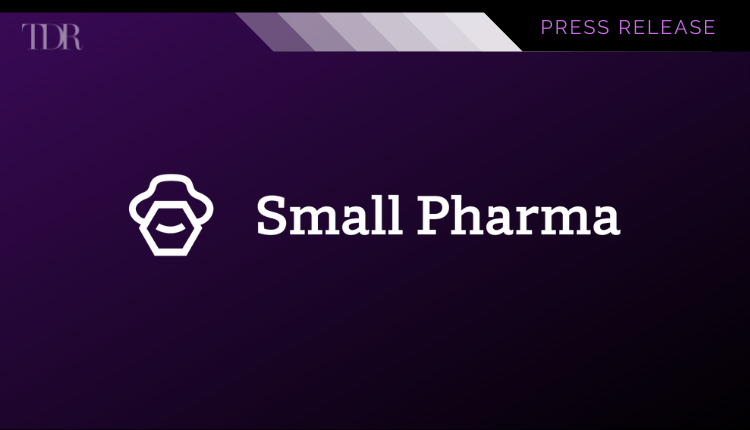
 thedalesreport.com
thedalesreport.com



